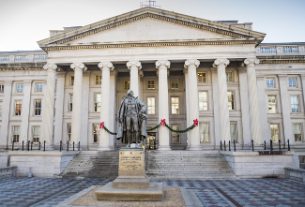One of the advantages of Bitcoin that appealed to many first adopters of the technology was the fact that it had no central authority. The only central entity was the protocol itself, which was used by miners, consumers, and investors across the globe. That meant that no single entity could create new bitcoins out of thin air. In the post-financial crisis era that saw trillions of dollars of new money created out of thin air through quantitative easing by central banks, that was a reassuring characteristic of Bitcoin that appealed to many people.
But to many who were unfamiliar with cryptocurrencies and uneasy about using digital currency, the thought of using a currency that wasn’t issued by a central authority was a difficult concept to fathom. Enter the concept of stablecoins, digital currencies that are backed by fiat money. Stablecoins began to become popular in 2017 when cryptocurrencies and digital currencies of all stripes took off. And with promises that stablecoins were backed 100% by fiat money, investors believed that their cryptocurrency holdings would remain as stable as the dollars that backed them.
One of the more popular stablecoins, Tether, has recently changed its terms of service to indicate that its coins are no longer automatically 100% backed by fiat money. When Tether first launched each Tether coin was backed 1-to-1 by a US dollar. Now the company states that each coin is backed by “our reserves, which include traditional currency and cash equivalents and, from time to time, may include other assets and receivables from loans made by Tether to third parties.”
That appears to indicate that Tether is looking to loan portions of its reserves in order to make some money. But that leaves the company open to default risk if the money it has loaned is not returned. In essence Tether is beginning to engage in operations akin to fractional reserve banking, hoping that Tether holders don’t all demand simultaneous conversion of their Tether coins back to fiat money.
For all the hype of stablecoins, actions like this indicate that they’re really not all that stable after all. Users of the currency once again have to trust that the stablecoins will remain fully backed. That trust problem is another problem that Bitcoin successfully overcame. And that’s why Bitcoin remains the dominant cryptocurrency, the most popular cryptocurrency with investors, and the one will remain standing when all other competitors fall by the wayside.
This article was originally posted on Coin IRA.





